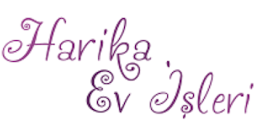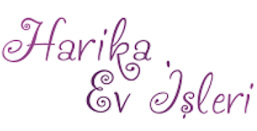Discover the Magic: The Easy & Eye-Catching "Sequential Crochet Pattern" for Beautiful Blankets!
Are you ready to crochet a blanket that stands out with a unique texture, yet remains incredibly simple to master? This guide unveils an easy-to-follow "sequential crochet pattern" that builds upon itself in a mesmerizing way, creating a beautiful and cozy fabric perfect for blankets of all sizes. Forget complex charts or endless video rewinds – follow these detailed, step-by-step instructions, and you'll effortlessly create a stunning, professional-looking crochet blanket entirely by reading!
[Placeholder for an inviting image of a crocheted blanket showcasing a textured, sequential stitch pattern]
Section 1: Gathering Your Essentials – Your Blanket-Making Kit
Before we dive into the stitches, let's gather your materials. Choosing the right yarn and hook will significantly impact the look and feel of your finished blanket.
- Crochet Hook: For a lovely drape in a blanket using worsted weight yarn, a 5.5mm (I-9 US) or 6.0mm (J-10 US) hook is often ideal. If you prefer a tighter fabric, go down a size; for a lacier, airier fabric, go up a size.
- Yarn:
- Weight: Worsted weight (Aran / 10-ply) is highly recommended for blankets due to its excellent stitch definition, warmth, and quick progress.
- Fiber: Select a yarn that is soft, durable, and easy to care for, especially if it's for a baby. Acrylic yarn is a popular choice for its softness, wide color range, and machine washability. Cotton blends, superwash wool, or chenille yarns also work beautifully.
- Quantity: For a standard throw blanket (approx. 45" x 60" or 115cm x 150cm), you'll typically need between 1800 to 2500 yards (1650 to 2300 meters) of worsted weight yarn. For a baby blanket (approx. 30" x 36" or 75cm x 90cm), aim for 800 to 1200 yards (730 to 1100 meters). Always buy a little extra just in case!
- Colors: This pattern looks striking in a single solid color, which highlights the texture. However, it also lends itself well to stripes (changing colors every few rows) or variegated yarns.
- Sharp Scissors: For cleanly cutting yarn.
- Tapestry Needle (Yarn Needle): Essential for seamlessly weaving in all your yarn ends at the end of the project.
- Stitch Markers (Optional): Useful for marking the first stitch of a row or for keeping track of your chain count if you're a beginner.
- Measuring Tape: For accurately checking your blanket's dimensions as you crochet.
Section 2: Understanding Crochet Abbreviations & Gauge
Familiarity with standard crochet abbreviations is key to following any pattern.
Common Crochet Abbreviations Used in This Pattern:
- Ch: Chain
- St(s): Stitch(es)
- Sk: Skip
- Sc: Single Crochet
- Dc: Double Crochet
- Ch-Sp: Chain Space (the space created by chain stitches in the previous row, where you'll insert your hook)
- Rep: Repeat
- Yo: Yarn Over
Gauge for a Blanket (Highly Recommended!):
While precise gauge isn't as critical for a blanket as it is for a fitted garment, checking it ensures your blanket reaches the desired size with your chosen yarn quantity and achieves the intended fabric texture.
- Create a Sample: Using your chosen hook and yarn, chain enough stitches to make a swatch about 15-20 cm (6-8 inches) wide.
- Work the Pattern: Work the "Sequential Crochet Pattern" (detailed below) for at least 10-15 rows.
- Measure: Lay your swatch flat, without stretching. Measure how many stitches (counting each 'V-stitch' or 'cluster' unit as one) you have across 10 cm (4 inches). Also, measure how many rows you have vertically in 10 cm (4 inches).
- Adjust Hook: If your swatch is larger than desired (fewer stitches per 10cm or too loose), use a smaller hook. If it's smaller (more stitches per 10cm or too stiff), use a larger hook.
Section 3: The "Different Technique" – Sequential Crochet Pattern (Detailed Stitch Guide)
This "sequential" pattern uses a staggered V-stitch (or a simple shell-like cluster) to create a beautiful, interlocking texture. Each "V" is placed into the chain space of the previous row's "V," creating a flowing, eye-catching design.
Stitch Multiple: This pattern requires a starting chain that is a multiple of 4 + 2 (e.g., 40+2 = 42 chains, or 120+2 = 122 chains).
The Pattern:
Yarn: Your chosen blanket yarn
Hook: Your chosen hook (e.g., 5.5mm / I-9)
Step 1: Starting Chain (Foundation Chain)
- Ch X: Make a chain that is an even number of stitches, specifically a multiple of 4 + 2. The number of chains will determine the width of your blanket.
- For a baby blanket (approx. 30 inches / 75 cm wide): Chain about 102 to 130 stitches (e.g., 102 = 4*25+2, or 122 = 4*30+2), depending on your yarn/hook combination.
- For a throw blanket (approx. 45 inches / 115 cm wide): Chain about 162 to 190 stitches (e.g., 162 = 4*40+2, or 182 = 4*45+2).
- Tip: Ensure your chain is not too tight. If your foundation chain is too tight, the bottom edge of your blanket might pull in.
Step 2: Row 1 (Foundation Row - Sets up the sequential pattern)
This row creates the base for your repeating stitch pattern.
- Sc in 2nd Ch from hook: Insert your hook into the second chain stitch away from your hook. Make one single crochet (Sc) stitch.
- *Ch 3, Sk 3 Ch, Sc in next Ch*:
- Chain 3.
- Skip the next 3 chain stitches.
- Make one single crochet (Sc) stitch in the following chain stitch.
- Rep * to end of chain: Continue repeating the sequence
*Ch 3, Sk 3 Ch, Sc in next Ch*until you reach the very last chain stitch of your foundation chain. You should end with an Sc in the last chain. - Turn: At the end of the row, turn your work over.
Step 3: Row 2 (The "Sequential" Repeat Row - This is the row you repeat!)
This row creates the main textured fabric, with stitches placed into the chain spaces from the previous row.
- Ch 3: (This Ch 3 counts as your first Double Crochet (Dc) stitch and Ch 1 of the pattern).
- Dc in 1st Ch-3 Sp: Make one Double Crochet (Dc) stitch into the very first Chain-3 Space from the previous row (the gap created by the Ch 3).
- *Ch 1, Sk 1 Sc, (1 Dc, Ch 1, 1 Dc) in next Ch-3 Sp*:
- Chain 1.
- Skip the next single crochet stitch (from the previous row).
- Now, in the next Chain-3 Space (from the previous row), you will make:
- One Double Crochet (Dc).
- Chain 1.
- One Double Crochet (Dc) all into that same Chain-3 Space. (This forms your "V-stitch" / "Shell" cluster).
- Rep * across the row: Continue repeating the sequence
*Ch 1, Sk 1 Sc, (1 Dc, Ch 1, 1 Dc) in next Ch-3 Sp*across the entire row. - End of Row 2: You will end this repeat after making your last
(1 Dc, Ch 1, 1 Dc)in the second-to-last Chain-3 Space. You will have one final single crochet stitch from the previous row remaining.- Ch 1, Sk 1 Sc, Dc in last Sc: Chain 1, skip the very last single crochet stitch, and make one Double Crochet (Dc) into that last single crochet stitch from the previous row. This creates a neat, balanced edge.
- Turn: At the end of the row, turn your work over.
Step 4: Continue Repeating Row 2
- Simply keep repeating Row 2 until your blanket reaches the desired length. For a typical baby blanket (approx. 36 inches / 90 cm long), this will be many rows. For a throw blanket (approx. 60 inches / 150 cm long), it will be even more. The consistent repetition makes it a relaxing and quick project.
Section 4: Finishing Your Beautiful Blanket
Once your blanket reaches the desired length, the final steps ensure a professional and durable finish.
- Bind Off: Cut your yarn, leaving a tail about 15-20 cm (6-8 inches) long. Yarn over your hook, pull the tail completely through the last loop on your hook, and pull gently to tighten and secure the stitch.
- Weave in Ends: Thread your tapestry needle with all loose yarn tails (starting and ending tails, and any new tails if you joined new skeins). Carefully weave these tails into the fabric, following the path of existing stitches, for at least 5-7 stitches. This hides them securely and invisibly. Try to weave in different directions slightly to prevent unraveling.
- Blocking (Highly Recommended!): Blocking will dramatically improve the appearance and drape of your crocheted blanket.
- Wet Blocking: Gently hand-wash your blanket (if yarn allows) or soak it in cool water for 20-30 minutes. Gently squeeze out excess water (do NOT wring!).
- Pin & Shape: Lay your damp blanket flat on a clean, dry towel or blocking mats. Gently stretch and shape it to your desired final dimensions. Use rust-proof pins to secure the edges in place.
- Dry: Allow the blanket to air dry completely. This can take 12-48 hours depending on yarn thickness and humidity. Once dry, remove pins. Your stitches will be more uniform, and the blanket will have a beautiful, professional drape.
Adding a Border (Optional):
While this stitch creates a lovely edge, adding a simple border can frame your blanket beautifully.
- Simple Sc Border: Join new yarn to any corner with a Sl St. Ch 1, then make Sc stitches evenly around the entire blanket. Aim for 1 Sc in each Sc stitch and 2 Sc in the side of each Dc (or 2-3 Sc along the side of each row). Make 3 Sc in each corner stitch to keep the corners crisp. Join with a Sl St to the first Sc.
- Picot Border: After completing a simple Sc border, you can add a picot border for extra texture.
Section 5: Tips for Success & Making it Truly Your Own
- Color Changes: To create stripes, simply join your new color in the last Ch-Sp of the previous row before making the turning chain.
- Size Customization: To make a wider blanket, start with a longer foundation chain (remember the multiple of 4 + 2). To make it longer, simply continue repeating Row 2 for more rows until your desired length is achieved.
- Yarn Texture: Experiment with different yarn textures. A super bulky chenille yarn would make a super soft, quick blanket, while a thin cotton might create a more open, airy throw.
- Patience is Key: Even with an "easy" pattern, consistent tension comes with practice. Don't be afraid to unravel and redo sections if you're not happy with them – it's part of the learning process!
Conclusion: Your Unique & Beautiful Crochet Blanket is Ready!
You've successfully mastered a unique "sequential crochet pattern" and transformed yarn into a beautiful, cozy blanket perfect for snuggling, gifting, or adorning your home. This stitch proves that "easy" doesn't mean sacrificing beauty or texture.
We'd love to see your finished blankets and hear about your color choices! Share your creations and any questions in the comments below. Happy crocheting!




0 Comments